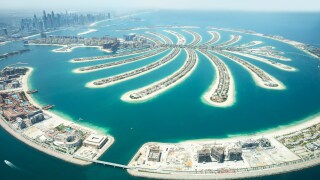The rapid growth of technology enterprises in Asia, such as Samsung and Lenovo, coupled with consumers’ insatiable hunger for data, is putting huge pressure on domestic operators’ networks in the region. Because Asian operators do not have the proximity to content to satisfy this demand on home turf, they are looking further afield to alleviate this pressure and have Europe firmly in their sights.
European wholesale providers offer an attractive connectivity option to Asian telcos – more so than North America – for two reasons.
Firstly, because the internet is more locally distributed in Europe and the availability of content across the continent is faster, more resilient and more reliable than in other regions. The demand for faster content delivery is causing a paradigm shift in how new web-based services are being provided by global enterprises. Consumers want access to their data, apps and services immediately, but existing delivery speeds simply are not good enough. This proliferation of mega exchanges in Europe ensures customers have access to the most cost-effective content in multiple European cities.
To reduce the number of data miles per circuit and boost their service levels, internet powerhouses such as Google and Facebook are localising their internet services by placing multiple network routes across Europe. Because these systems are spanning huge geographical areas, laying down multiple routes and cables will ensure that if there are any pinch points along the network, there are alternative routes available for traffic flow to be redistributed to avoid an outage. The geographic spread of computing power, delivered over the vast network cables that criss-cross the continent, represents a new frontier – with associated opportunities and challenges.
Secondly, to go through Russia to get to Europe by land is more effective than going via submarine cables to America. This is because there is more capacity and resiliency available on terrestrial network cables than on submarine cables, thus enabling higher aggregate data rates and comparatively rapid restoration of routes.
So with demand for pan-European connectivity on the up, it will be the European wholesale providers who are armed with readily available capacity, modern fibre networks and extensive network footprints, along with an understanding of the evolved geography of the data centres and routes that will gain great competitive advantage. Now is the time for them to develop new ways of overcoming any physical restrictions and bumps in the road to lay down routes that connect the fringes of Asia to Africa to America, joining up the peripheries of Europe to ensure data traffic flows freely across the continent and beyond.




